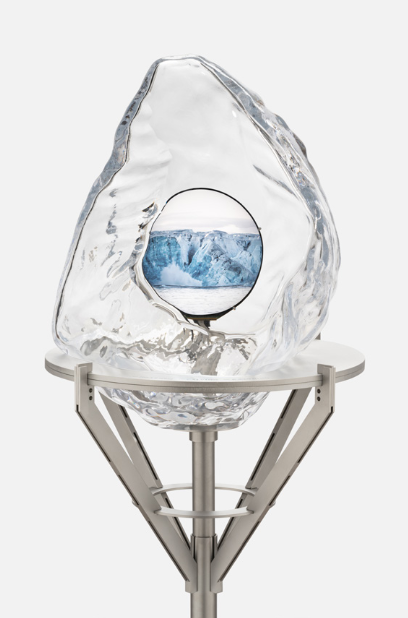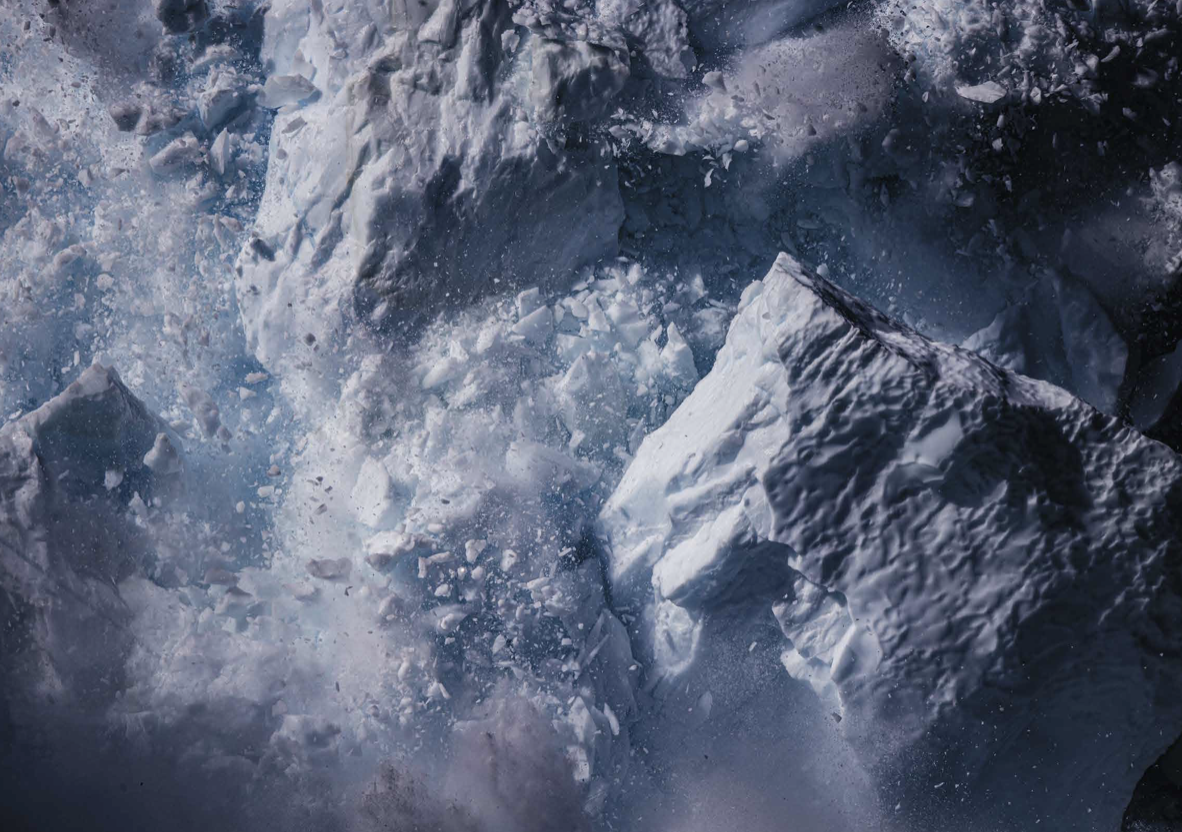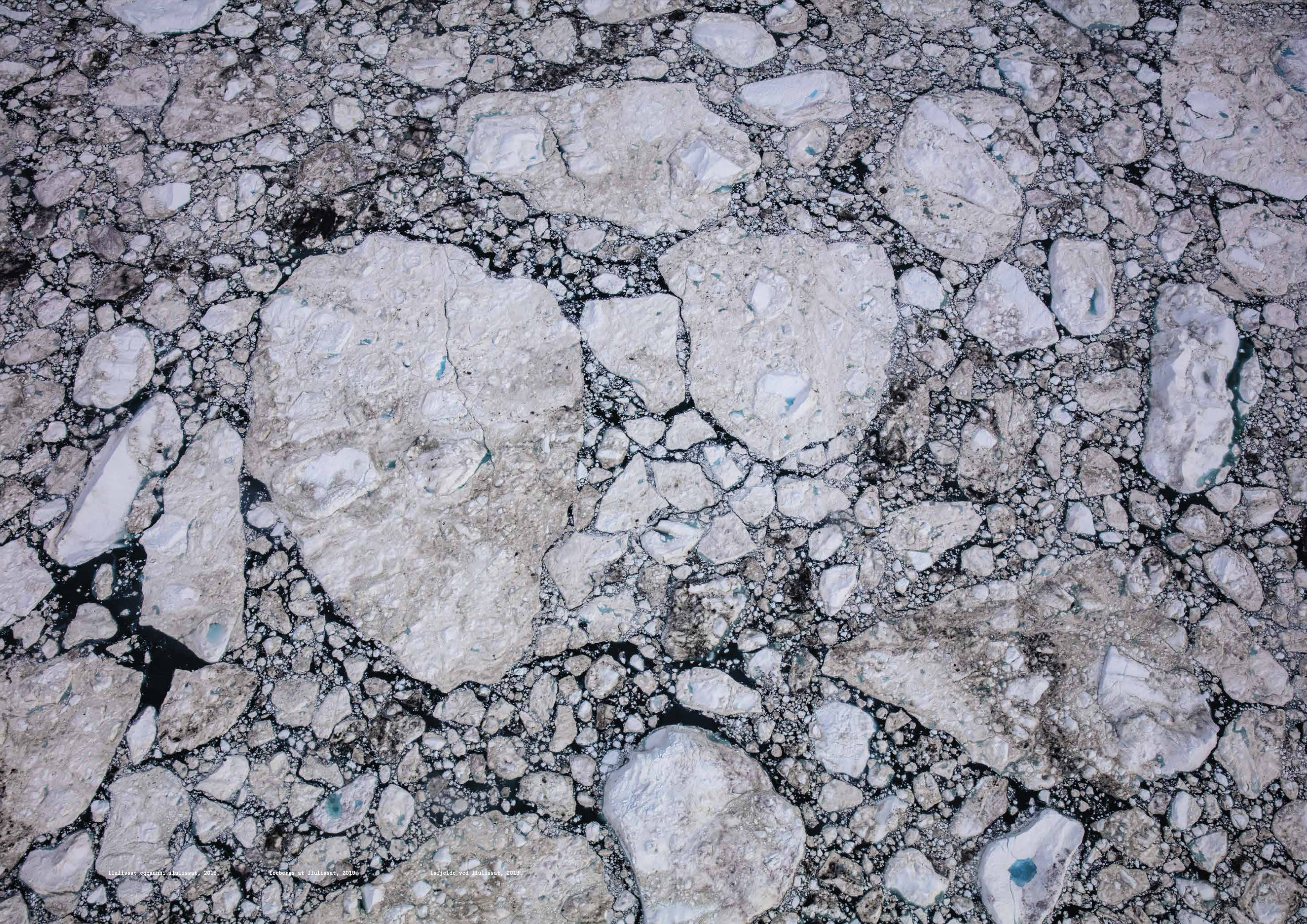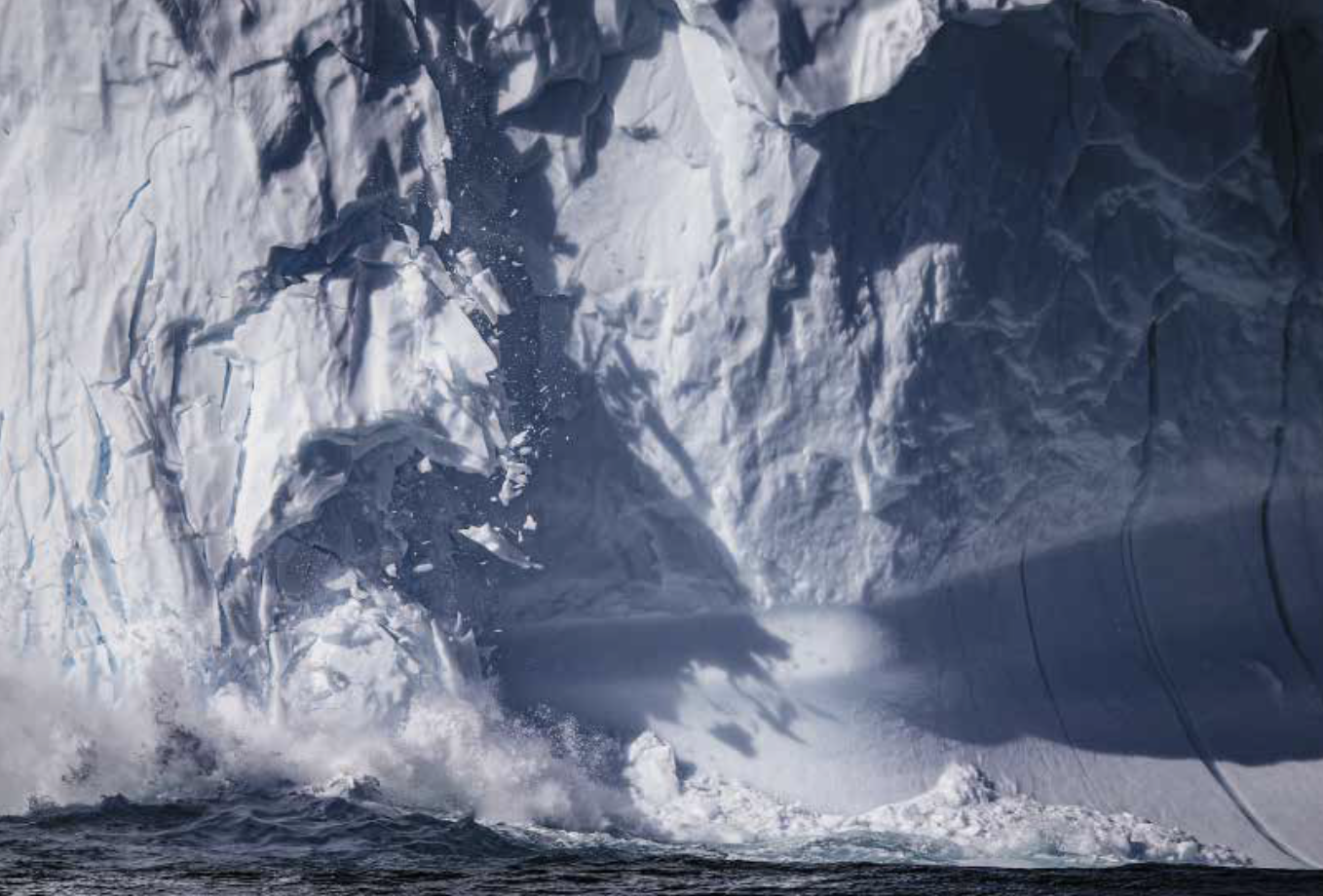CALVING

- Why does Sermeq Kujalleq calve?
- The journey of an iceberg through the Icefjord
- 10% of the icebergs from Greenland’s ice sheet calve from Sermeq Kujalleq
- Calving creates huge waves
You solve the tasks by using
- Text
- Audio
- Drawing tools
- Images
In the book you can find more information about the subject.
There are several causes for the Sermeq Kujalleq glacier calving.
Partly because of gravity. With new layers of snow the glacier is increasing and this creates a pressure on the bottommost ice, causing it to move outwards.
Partly because of temperature changes. In summer when the water gets warmer, the glacier is hollowed from the bottom, and large icebergs break off the front.
All the time pieces break off the glacier front, but it is only in summer that the large icebergs are calved.

See the film on slide 10 once more. What colours do you see in the ice breaking off the glacier?
Where are the different type of ice seen in the movie formed?
The Icefjord is at places more than 1 km deep, but at the mouth to the Disko Bay is a moraine. It was formed thousands of years ago when the glacier front was there.
Many of the big icebergs can pile up there. They do not drift along until being pressured by new icebergs or having melted enough to get free of the bottom.

The two persons on the bench have been to the Icefjord Centre. Write a dialogue where they talk about the centre and about the journey of the iceberg through the Icefjord.
Dialogue:
Here you see an aerial photograph of the icebergs at Ilulissat 2019. They come from the glacier Sermeq Kujalleq.
The glacier calves about 40 to 50 km³ each year.
It is one of the fastest in the world. In summer it moves around 40 metres a day.

On the top of the icebergs something blue is seen. What is that?
1 m³ contains 1000 liters of water. How many liters does 1 km³ contain?
And how many liters do 40 km³ contain?
When the glacier calves, large amounts of ice fall into the sea, which can create huge waves of enormous force.
As it is not known exactly when the glacier calves or an iceberg turns around, it can be dangerous to be on the sea or at the coast in Ilulissat.

Write or record an essay with the title Account of a journey – with kayak through the Icefjord and the meeting with a giant wave.
There are several causes for the Sermeq Kujalleq glacier calving.
Partly because of gravity. With new layers of snow the glacier is increasing and this creates a pressure on the bottommost ice, causing it to move outwards.
Partly because of temperature changes. In summer when the water gets warmer, the glacier is hollowed from the bottom, and large icebergs break off the front.
All the time pieces break off the glacier front, but it is only in summer that the large icebergs are calved.

See the film on slide 10 once more. What colours do you see in the ice breaking off the glacier?
Where are the different type of ice seen in the movie formed?
The Icefjord is at places more than 1 km deep, but at the mouth to the Disko Bay is a moraine. It was formed thousands of years ago when the glacier front was there.
Many of the big icebergs can pile up there. They do not drift along until being pressured by new icebergs or having melted enough to get free of the bottom.

The two persons on the bench have been to the Icefjord Centre. Write a dialogue where they talk about the centre and about the journey of the iceberg through the Icefjord.
Dialogue:
Here you see an aerial photograph of the icebergs at Ilulissat 2019. They come from the glacier Sermeq Kujalleq.
The glacier calves about 40 to 50 km³ each year.
It is one of the fastest in the world. In summer it moves around 40 metres a day.

On the top of the icebergs something blue is seen. What is that?
1 m³ contains 1000 liters of water. How many liters does 1 km³ contain?
And how many liters do 40 km³ contain?
When the glacier calves, large amounts of ice fall into the sea, which can create huge waves of enormous force.
As it is not known exactly when the glacier calves or an iceberg turns around, it can be dangerous to be on the sea or at the coast in Ilulissat.

Write or record an essay with the title Account of a journey – with kayak through the Icefjord and the meeting with a giant wave.



